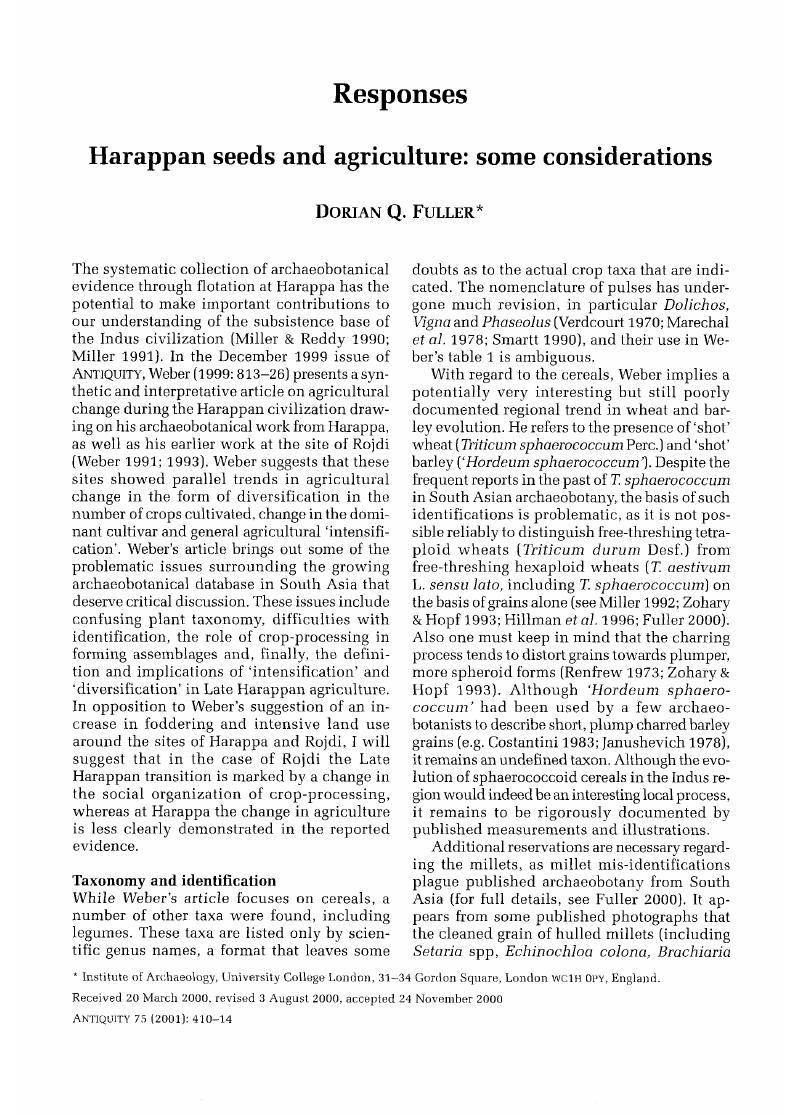Crossref Citations
This article has been cited by the following publications. This list is generated based on data provided by Crossref.
Fuller, Dorian Q
2006.
Agricultural Origins and Frontiers in South Asia: A Working Synthesis.
Journal of World Prehistory,
Vol. 20,
Issue. 1,
p.
1.
Fuller, Dorian Q
2007.
The Evolution and History of Human Populations in South Asia.
p.
393.
Weber, Steve
Kashyap, Arunima
and
Harriman, David
2010.
Does size matter: the role and significance of cereal grains in the Indus civilization.
Archaeological and Anthropological Sciences,
Vol. 2,
Issue. 1,
p.
35.
Frachetti, Michael D.
Spengler, Robert N.
Fritz, Gayle J.
and
Mar'yashev, Alexei N.
2010.
Earliest direct evidence for broomcorn millet and wheat in the central Eurasian steppe region.
Antiquity,
Vol. 84,
Issue. 326,
p.
993.
Frachetti, Michael D.
2012.
Multiregional Emergence of Mobile Pastoralism and Nonuniform Institutional Complexity across Eurasia.
Current Anthropology,
Vol. 53,
Issue. 1,
p.
2.
2012.
A Companion to the Archaeology of the Ancient Near East.
p.
1117.
Mori, Naoki
Ohta, Shoji
Chiba, Hajime
Takagi, Toshiya
Niimi, Yukiko
Shinde, Vasant
Kajale, Mukund D.
and
Osada, Toshiki
2013.
Rediscovery of Indian dwarf wheat (Triticum aestivum L. ssp. sphaerococcum (Perc.) MK.) an ancient crop of the Indian subcontinent.
Genetic Resources and Crop Evolution,
Vol. 60,
Issue. 6,
p.
1771.
Beck, Wendy
and
Dotte‐Sarout, Emilie
2013.
Archaeology in Practice.
p.
336.
Spengler, Robert N.
Cerasetti, Barbara
Tengberg, Margareta
Cattani, Maurizio
and
Rouse, Lynne M.
2014.
Agriculturalists and pastoralists: Bronze Age economy of the Murghab alluvial fan, southern Central Asia.
Vegetation History and Archaeobotany,
Vol. 23,
Issue. 6,
p.
805.
Spengler, Robert N.
2015.
Agriculture in the Central Asian Bronze Age.
Journal of World Prehistory,
Vol. 28,
Issue. 3,
p.
215.
Lukacs, John R.
2017.
Dental adaptations of Bronze Age Harappans: Occlusal wear, crown size, and dental pathology.
International Journal of Paleopathology,
Vol. 18,
Issue. ,
p.
69.
Kingwell-Banham, Eleanor
2019.
Dry, rainfed or irrigated? Reevaluating the role and development of rice agriculture in Iron Age-Early Historic South India using archaeobotanical approaches.
Archaeological and Anthropological Sciences,
Vol. 11,
Issue. 12,
p.
6485.
Tamang, Jyoti Prakash
2020.
Ethnic Fermented Foods and Beverages of India: Science History and Culture.
p.
1.





